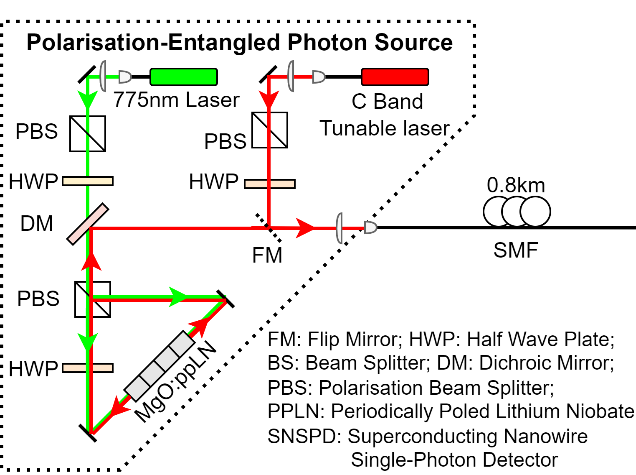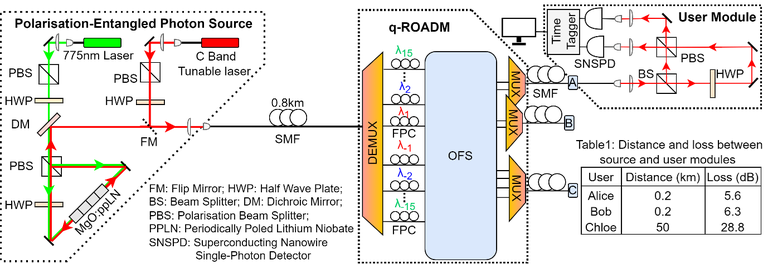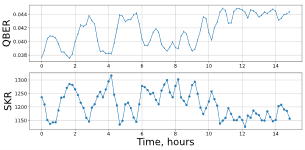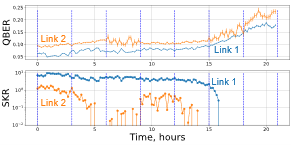
Case study: Towards a quantum network within deployed telecommunications fibre-optic infrastructure
University of Bristol demonstrate a scalable, full mesh, polarisation entanglement-based 3-user quantum network over ~50 km metropolitan NDFF fibre link.
The next-generation quantum internet will mainly consist of entanglement-based networks which enable the distribution of entanglement resources across different nodes. Such networks will not only allow applications beyond Quantum Key Distribution (QKD) but also tackle the difficulties of scaling the standard point-to-point QKD protocols with device-independent security.
At University of Bristol, we demonstrate a scalable, full mesh, polarisation entanglement-based 3-user quantum network over ~50 km metropolitan NDFF fibre link (Fig. 1).
The experimental testbed consists of a polarisation entanglement source, a wavelength DEMUX that divides the broadband entangled photon spectrum into 30 100 GHz ITU channels, an optical fibre switch (OFS) to control the dynamicity, a MUX to combine the entangled photons in a single fibre such that every user shares bipartite entanglement with other users, and lastly, 3 users, namely Alice (A), Bob (B) and Chloe (C), where each user has a polarisation analysis user module with two detectors to perform the BBM92 QKD protocol. The DEMUX, OFS and MUX form a q-ROADM. Users A and B are directly connected to the q-ROADM via low-loss MUX, while C is the user connecting to the q-ROADM through ~50km NDFF fibre.

Fig. 1: Experimental testbed diagram consisting of a broadband polarisation-entangled photon source connecting to 3 users over 50km of NDFF fibre link.
The results indicate relatively stable secret key rate (SKR) and quantum bit error rate (QBER) over the monitored time with highest SKR to be > 1300 bps and QBER < 4.5% [Fig. 2(a)]. Fig. 2(b) reveals that both links, A-C (link1) and B-C (link2) are able to survive for long-distance communication over 10 hours, proving that our system can perform efficient long-distance communication of up to 50 km, with a maximum link SKR of 5.78±0.21 bps.


Fig. 2: Experiment results of local link and two remote links. (a) local link, A-B; (B) two remote links, link1: A-C and link2: B-C.
This work has been funded by the EPSRC Quantum Communications Hub (EP/T001011/1).
For further information, contact Prof. Dimitra Simeonidou, ndff@ee.ucl.ac.uk.
Published: 23 February 2022
